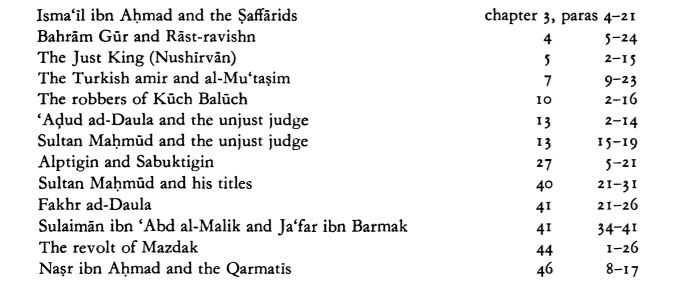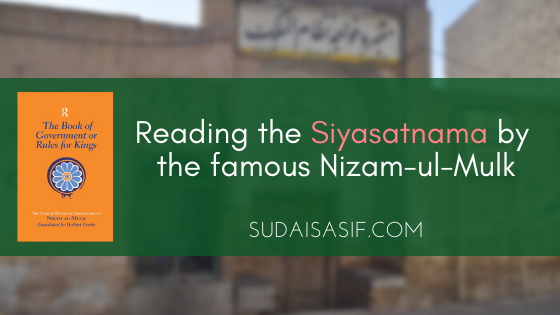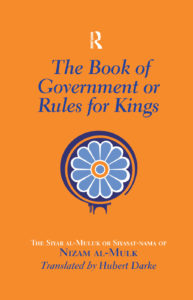Historical Turkish TV shows have received a lot of praise lately for their storyline and modest content tailored to a Muslim audience. Their has been criticism as well aimed at the fact that their are a lot of inaccuracies – owing to the lack of historical material and the scriptwriters trying to make the shows as interesting as possible. Regardless, they have done a brilliant job of reinvigorating the interest of modern day people in those that passed away centuries ago. One such show named Uyanis Buyuk Selcuklu revolves around the reign of Sultan Malik Shah I, a sultan of the Great Seljuks. The empire during his time was no doubt at its zenith, unrivaled in its magnanimity.
With him was a vizier named Nizam-ul-Mulk, perhaps the most famous of viziers that have existed till date and for good reason. He ruled for 30 years both with Sultan Malik Shah and his father, Sultan Alp Arslan. Not only that, he was the one responsible for establishing a large number of Madrasas across the empire within which the famous Al Ghazzali rose to fame as well. Now, all of this is cool to know but there’s an interesting story here:
The Book’s Existence
One day, the Sultan asked viziers, noblemen, and other members of his court to write books that cover the practices of the earlier kings comparing them to the present time in order to determine if they had digressed from the right and so all wrongs can be amended in his kingdom. Many books were produced in front of him but the Sultan only accepted Nizam-ul-Mulk’s submission containing 39 chapters. This book was called the Siyasatnama which has been seen as a Persian classic to date.
This naturally made me want to read this book – it’s important by all accounts and so google searches begin but zero books found, nada, zilch! An English translated version did exist named “The book of government; or, Rules for kings” by someone named Hubert Darke but behind paywalls inaccessible to free-scouring-me.
Yet, academia has thought me a trick or two about using a DOI to get around a paywall and yes I did! And thus began my reading spree of which I have reported a summary here while leaving a link for you to read the whole book by yourself.
As for the methodology here, I will be mentioning a few themes from the whole book which would give you a suitable idea of what it entails in whole. But before that, the structure of the book consists of 50 chapters. 39 of these were written for the first time when the Sultan asked for a book to be written while 11 of them were written later on. Moreover, it is unclear if the latter 11 were ever read by Sultan Melik Shah I. These chapters talk about a range of topics including court etiquette, tax collection, spies, employment, enjoyment of the Kings, audience giving, and much more. Some are short as a paragraph only while some span quite a lot of pages.
The king’s fear of God
- To start off, in the 2nd chapter named “On recognizing the extent of God’s grace towards kings”, the vizier quotes something very insightful:
Great men have said, “A kingdom may last while their is irreligion, but it will not endure where there is oppression.”
To me, this hits right at the core of the current geopolitical situation. A large majority of religious Pakistani citizens would boast or be proud about the fact that they live in an Islamic state and how we should be wary of “Western culture”. That’s true, we should be wary of it but we’re worried about it before sorting our priorities regarding the fact that religion is being used in our country by extremists to actually oppress other people(including an entire gender). So in light of the above quote, what use is such religiosity? The same could be said of other theocratic states like Saudia Arabia.
This theme is overall repeated throughout the book advising kings to give the people their rights fearing Allah’s punishment. A story of Harun Ar-Rashid and his wife Zubeyda is also narrated in this aspect. Moreover, various narrations of the Prophet Muhammad PBUH are also used to solidify his points.
Stories
Moving on, stories are also mentioned of various rulers throughout history. One such tale revolves around the Saffarid dynasty whose founder went to fight the Abbasid Caliph in Baghdad. The vizier relates this story not in too much detail but does give us an overall account of what really happened and how events ultimately turned out. However, I did find him to have a tone biased in favor of the Caliphs mostly but this should be no surprise, the Great Seljuks greatly respected the caliphate in Baghdad and it is only natural that they should be seen in a favorable light.
Yet, I also found this disgusting at times. One of these was titled “the story of Al Mu’tasim’s three victories” in which an Abbasid caliph tells a judge of how he is happy because he just had sexual intercourse with three women – the daughters of his 3 enemies who were previously maidens(virgins). Whether this was consensual or not is not mentioned but to take something as beautiful as intimacy and term it as a victory is truly derogatory towards women and sickening, to say the least. It is true that women have suffered much in history. The story is mentioned in the exact words as the following:

Next, we also have the story of a Sassanian king named Bahram Gur and his vizier. Here, Nizam-ul-Mulk illustrates in detail what a corrupt minister can do in causing harm to a king’s empire. For present-day rulers, this should require them to closely look into their right-hands and see that they are doing justice. In the context of Pakistan, I think the prime minister would benefit very well from this advice considering his entire cabinet is full of anyone but full-time suited cronies. There are many more stories as well from the same empire which I will not mention here as they are beyond the scope of this post.
The below table obtained from a document online presumably from the original publishers shows a summary of the stories mentioned in the book:

The First Sultan in Islam
Then comes an interesting fact. Talking about the story of Mahmud Ghaznavi, the vizier lets us know that he was the very first Islamic ruler to use the title of “Sultan”. A title that would be used till date, truly one of my favourites. About his story, Sultan Mahmud was not handsome, he is reported to be ugly in appearance which led to an interesting discussion with one of his viziers named Ahmed Ibn Hassan after he ascended the throne. The Sultan told him,
I am afraid that people don’t love me because I am not handsome; they always prefer handsome kings.
To this, the vizier uttered a very noble statement, a statement which he told him would make the Sultan very loved amongst his people:
Take gold as your enemy and men will regard you as their friend.
And this lay the base for how his Sultanate was run according to Nizam-ul-Mulk bringing great glory and stability to his empire. Many more stories are found on Sultan Mahmud across various chapters, the most interesting of which was his father’s rise to leadership from being a slave boy.
Seljuk Critique
A vizier of the Seljuks yet you find him bold enough to speak his mind on what he finds wrong with the dynasty. In one particular chapter on spies, he states his displeasure at the fact that the Seljuks remain the only Muslim empire which have not employed spies across the empire for intelligence purposes which has the ability to cause great harm. He states,
From ancient times onwards kings have preserved this system, except for the house of Saljuq who have shown no interest in the matter.
He explains the reason for so with a story from Sultan Alp Arslan which I have displayed in the photo below:

Extremist views
Coming across these made me stop for a moment. I though of Nizam-ul-Mulk as very heroic in what he had done for the Muslim world but I find his views on women and people from other sects & religions very problematic.
Firstly, he believes that women are not intelligent enough to help in matters of the state backing these up with various traditions attributed to the Prophet and his companions. He also states that should not be consulted and if they are, one should do opposite of what has been advised.
On this, he has not backed up these traditions with any source and seeing that he has added fictional words throughout the book for illustrating his points, these traditions too could be cherry-picked regardless of their authenticity. Yet, even if we believed that they were authentic, any decent Muslim would know that they have been grossly misinterpreted for the Prophet Muhammad PBUH never saw women as such with his own wives having considerable say in his own life and afterward. Moreover, his wife Hazrat Ayesha RA is well known to be involved in political affairs after his death which the Muslim community would never have expected if it were explicitly forbidden. It is true as the vizier says that the Sultan should not be influenced by his wives or women but to use that danger as an excuse to forbid them from participating in public life is not the right way.
Secondly, he believes that Jews, Christians, and members of other religions should not be employed by the state for they will ultimately harm the interests of the Muslims. Now, centuries ago, the context for politics and religious boundaries was indeed different and so keeping in mind that various minorities lived under peace in the Seljuk, I can think of this as precautionary state policy which did not result in their persecution. However, in another place (p178), he declares the following,
Now a Wazir needs to have sound faith and to belong to a pure sect – either Hanafi or Shafi’i….
How could you possibly consider that only these 2 sects of Islam are the purest and only their worshippers worthy of employment? This is absurd, to say the least for even within the orthodox Sunni school of Islam, you have 2 other sects, namely the Hanbali and Maliki schools which have equal legitimacy and not even their founders would consider each other heretics. To expose his hypocrisy here a bit further, the Sultans belonged to the Hanafi school(as he mentions Sultan Alp Arslan did) whereas Nizam-ul-Mulk himself was a Shafi’i. We could say that if the Sultan was a Maliki, he would replace the claim of Hanafis being pure with the Malikis.
Criticism is also levied against the Shia Muslims but due to the various deviant groups that existed at the time which also called themselves Shia, it is unclear if he was directing this criticism to the main Twelver Shias we know today as well or exclusively those that were known to be troublemakers in his time.
Conclusion
To summarise, in the book, you will really be able to see how the elites thought of that era and come across the names of many historical groups and figures you may have never heard of before. Researching into them more can help you expand your knowledge. For me, both of these occurred but most importantly, I learned a lot about the author himself, and surely that has tainted his reputation from one perspective in my memory. Be aware that everything mentioned in the book does not have to be true though, particularly the stories because of a lack of sources mentioned and a lot of conflicts historically over their true versions as well.



